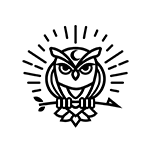In the dynamic realm of website development, WordPress stands as a beacon, empowering users with a user-friendly interface and a plethora of plugins. Among these, form plugins are integral for seamless communication and interaction. However, the recent discovery of a critical vulnerability in a popular WordPress form plugin has sent shockwaves through the community, affecting over 200,000 installations. In this comprehensive article, we delve into the intricacies of this vulnerability, its potential ramifications, and the proactive steps users can take to fortify their websites.
Understanding the Vulnerability:
At the heart of this security concern lies, a widely adopted WordPress form plugin renowned for its versatility and functionality. Security researchers have unearthed a flaw that could expose websites to a spectrum of risks, ranging from unauthorized access to potential data breaches. To comprehend the gravity of the situation, it’s essential to explore the specific characteristics of this vulnerability.
- Nature of the Vulnerability:
- The vulnerability manifests itself, allowing potential exploits that compromise the security integrity of the plugin. Security experts have classified, it due to its potential impact on user data and website functionality.
- Potential Exploits:
- Exploiting this vulnerability could open the door to a range of malicious activities. From unauthorized access to sensitive user data to potential injection attacks, the implications extend far beyond mere inconvenience.
- Scope of Affected Installations:
- The widespread adoption of Plugins translates to a vast number of affected installations. With over 200,000 websites relying on this plugin, the scale of the vulnerability is alarming, necessitating urgent attention from the website development community.
Immediate Steps for Mitigation:
With the gravity of the situation established, it becomes imperative to outline immediate steps that website administrators and developers can take to mitigate the risks posed by this vulnerability.
- Update the Plugin:
- The primary and most urgent step is to check for updates provided by the plugin developer. These updates often include patches to address known vulnerabilities. Updating to the latest version promptly is crucial to plug potential security holes.
- Temporary Deactivation:
- Considering the severity of the vulnerability, a temporary deactivation of the plugin might be a prudent measure. While this may disrupt certain functionalities temporarily, it serves as a preventive step until the necessary updates are applied.
- Security Audits:
- A comprehensive security audit of the website is warranted to identify any signs of unauthorized access or suspicious activities. Regular audits contribute to early detection and prompt mitigation.
- Backup Your Website:
- Before implementing any updates, it’s prudent to ensure you have a recent backup of your website. This precautionary step acts as a safety net in case of complications during the update process.
- Monitor for Anomalies:
- A vigilant eye on your website’s traffic and user activities is essential. Unusual patterns or unexpected behaviours could be indicative of a security breach. Timely detection allows for swift response.
Communication and Transparency:
In the context of a website serving a user base, transparent communication about the identified vulnerability is pivotal. Users should be informed about the nature of the vulnerability, the steps being taken to address it, and any precautions they might need to undertake on their end. This open communication fosters trust and empowers users to collaborate in ensuring the security of the platform.
In-Depth Analysis of the Vulnerability:
To comprehensively address the concerns surrounding the vulnerability, a detailed analysis is warranted. This section delves into the specifics of the vulnerability, exploring its origins, potential exploits, and the technical nuances that make it a critical focal point for website security.
- Origin and Discovery:
- Understanding where the vulnerability originates is crucial for developing effective countermeasures. The discovery of the flaw often involves a meticulous process of penetration testing, code analysis, or community reporting.
- Potential Exploits Explored:
- A granular examination of potential exploits sheds light on the diverse ways in which attackers could leverage the vulnerability. This includes but is not limited to data breaches, injection attacks, and compromise of user credentials.
- Technical Aspects:
- Delving into the technical aspects of the vulnerability involves dissecting the underlying code, architecture, and interaction points within the plugin. This understanding is vital for developers tasked with implementing patches and updates.
Proactive Measures for Website Security:
Beyond the immediate steps for mitigation, it’s essential to outline proactive measures that website administrators and developers can adopt to enhance overall website security. These measures contribute to a robust defence against not only the current vulnerability but also future threats.
- Regular Security Audits:
- Implementing a schedule of regular security audits ensures continuous monitoring of the website for potential vulnerabilities. Automated tools, coupled with manual checks, provide a comprehensive overview of the site’s security posture.
- Educating Users:
- User education plays a pivotal role in overall security. Providing users with best practices, such as strong password policies and recognizing phishing attempts, empowers them to contribute to the platform’s security.
- Implementing Web Application Firewalls (WAF):
- Web Application Firewalls act as an additional layer of defence, intercepting and filtering malicious traffic before it reaches the website. Implementing a robust WAF can significantly enhance security.
- Collaboration with Cybersecurity Experts:
- In an ever-evolving landscape, collaborating with cybersecurity experts or hiring penetration testers can bring an external perspective to the website’s security posture. Their insights can help identify blind spots and potential improvements.
The discovery of a critical vulnerability in a widely used WordPress form plugin underscores the inherent challenges and responsibilities associated with managing websites in the digital age. The dynamic nature of cybersecurity demands continuous vigilance, prompt action, and a proactive approach to fortify against potential threats.
As the website development community rallies to address this specific vulnerability, the broader takeaway is a reminder of the collective responsibility to prioritize and invest in robust cybersecurity measures. From immediate steps for mitigation to in-depth analyses of vulnerabilities and proactive security measures, this article serves as a comprehensive guide for navigating the complex landscape of website security. By staying informed, implementing best practices, and fostering a culture of security, website administrators can not only address the current threat but also fortify their platforms for the challenges of tomorrow.
Consulting, Technology, E-commerce, Digital, Media, Cloud, Operations & Staffing. Alumni of Pune University.

























